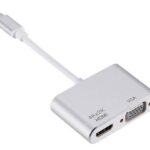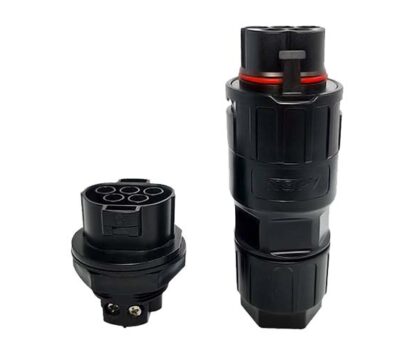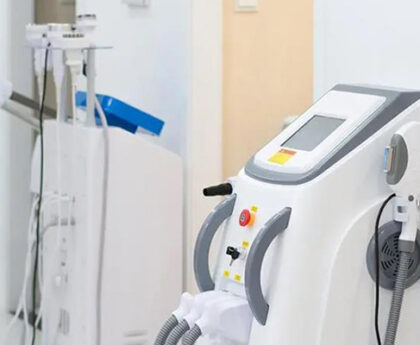Power adapters are an important, but often overlooked, component of many electronic devices. It’s important to choose the right size power adapter for your device to ensure that it works properly and safely. In this post, we’ll cover how to determine the required voltage and amperage for your device and how to choose a power adapter with the correct ratings. We’ll also discuss some physical compatibility issues to consider.
What is an AC Adapter?
An AC adapter, also known as an AC/DC adapter or power adapter, is a device that supplies power to an electrical device using an alternating current (AC) source. It converts the AC power from a wall outlet or other power source into the DC power required by the device.
AC adapters are commonly used with laptops, smartphones, tablets, and other portable electronic devices that do not have a built-in power supply. They are also used with larger electronic devices, such as desktop computers, monitors, and printers, to reduce the need for a built-in power supply and make the device more portable.
AC adapters are available in a range of sizes and voltage and amperage ratings to accommodate different types of devices. It’s important to choose the right size and type of AC adapter for your device to ensure that it operates properly and safely.
How to Choose the Right AC Adapter for Your Device
Determine the Required Voltage and Amperage
The power adapter size is determined by the required voltage and amperage of the device. You can find this information in the device’s manual or by looking for labels on the device itself.
The voltage rating indicates the amount of electrical potential difference required for the device to operate properly. The power adapter must have the same or higher voltage rating as the device. Using a power adapter with a lower voltage rating can result in the device not functioning properly.
The amperage rating, on the other hand, indicates the amount of current that the device requires to operate. The power adapter can have a lower amperage rating than the device, but it’s important not to use a power adapter with a higher amperage rating. Using a power adapter with a higher amperage rating can cause damage to the device.
Choose a Power Adapter with the Correct Ratings
Once you’ve determined the required voltage and amperage ratings for your device, you can begin shopping for a power adapter. Make sure to choose a power adapter that meets or exceeds the required ratings.
It’s important to note that the power adapter’s plug must also fit into the device’s power port. Some devices may have unique power ports that require a special type of power adapter. Consult the device’s manual or manufacturer for information on compatible power adapters.
Consider the Power Adapter’s Physical Size and Compatibility with the Device
In addition to the voltage and amperage ratings, it’s important to consider the physical size and compatibility of the power adapter with the device.
Ensure that the power adapter’s plug fits snugly into the device’s power port. A loose fit can result in poor connectivity and may cause the device to malfunction or not charge properly.
It’s also a good idea to consider the size and shape of the power adapter, especially if you’ll be traveling with the device. A large, bulky power adapter may not be practical for taking on the go. In this case, you may want to look for a smaller, more portable power adapter.
Tips to Select an AC Adapter and Device with Matching Specs
When selecting an AC adapter for a device, it’s important to ensure that the adapter’s specifications match the required voltage and amperage of the device. Here are some tips for selecting an AC adapter with matching specs:
- Determine the required voltage and amperage of the device. You can find this information in the device’s manual or by looking for labels on the device itself.
- Choose an AC adapter with the same or higher voltage rating as the device. Using an AC adapter with a lower voltage rating can result in the device not functioning properly.
- Choose an AC adapter with the same or lower amperage rating as the device. Using an AC adapter with a higher amperage rating can cause damage to the device.
- Make sure the AC adapter’s plug is compatible with the device’s power port. Some devices may have unique power ports that require a special type of AC adapter.
- Consider the physical size and compatibility of the AC adapter with the device. Ensure that the AC adapter’s plug fits snugly into the device’s power port and consider the size and shape of the AC adapter if you’ll be traveling with the device.
By following these tips, you can ensure that you select an AC adapter and device with matching specifications. This will help the device operate properly and safely.
Conclusion
Choosing the right size power adapter for your device is important to ensure that it functions properly and safely. Make sure to consider the required voltage and amperage ratings, as well as the physical compatibility of the power adapter with the device. Don’t forget to double-check the device’s manual and the power adapter’s specifications before making a purchase. Using the wrong size power adapter can result in damage to the device or potential safety hazards.



